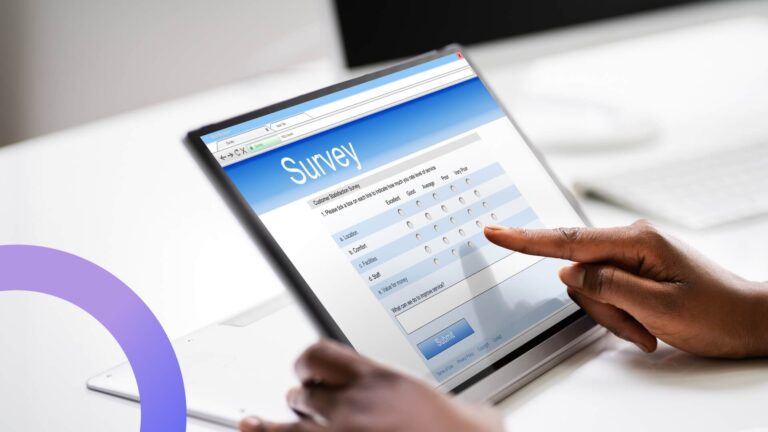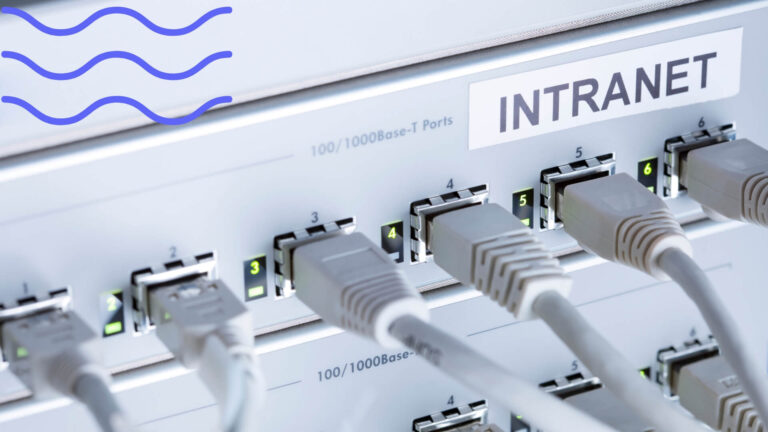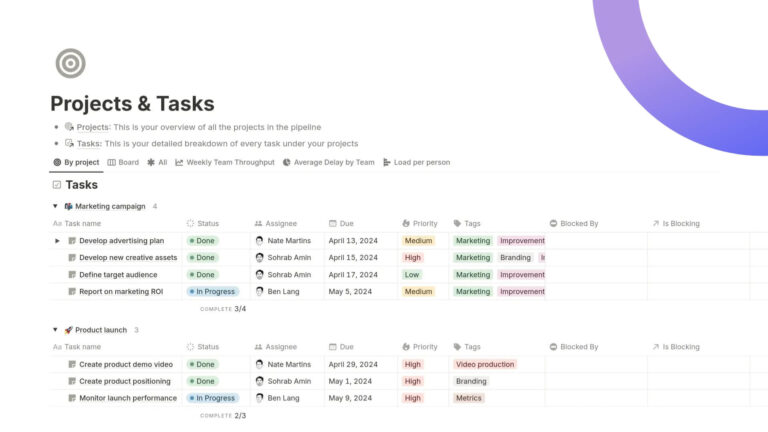Kanban Integration in Microsoft Teams: Comprehensive Guide & Best Practices
Optimize your team's workflow with Microsoft Teams Kanban Boards. Dive into the power of visual task management and discover tools that transform productivity, ensuring every project is a success.
Introduction
Have you ever found your hardworking team struggling to meet expectations, leaving everyone feeling burnt out and frustrated? Despite various attempts to improve, you still face missed deadlines and dissatisfied clients. Modern pace of decision-making demands effective productivity tools, and among them, kanban boards have established itself as a top solution.
With the number of Microsoft Teams users steadily increasing worldwide, it’s essential to recognize that kanban, along with calendar and Gantt charts, stands out as one of the most convenient ways to skyrocket efficiency.
In this article, we’ll guide you on how to leverage kanban boards within MS Teams for maximum productivity. For an overview of popular kanban solutions and kanban integrations with Teams, you can explore the related article.
What are Kanban Boards
Kanban boards are tools for visualizing, tracking, and managing project tasks. Digital kanban board apps simplify this process: with them you create task cards and move these cards across different columns (e.g., in progress, not started, done, pending, and high priority) as tasks progress.
A kanban board is an exceptionally user-friendly project management tool, ideal for team collaboration. Within Microsoft Teams, kanban boards offer an excellent solution for visual task management, improving teamwork and overall efficiency. Whether you’re looking to implement kanban in Teams, set up a Microsoft Teams kanban board, or explore the benefits of kanban board integration with Teams, this article will guide you through the process.
For a more detailed explanation of what kanban boards are and their online applications, you can refer to our fresh article.
Does Microsoft Teams Have a Kanban Board?
If you’re wondering whether Microsoft Teams provides a built-in Kanban board, the answer is not a direct “yes.” While Teams offers collaboration and task management features, it doesn’t include a Kanban board by default. However, you can integrate Kanban boards seamlessly into Microsoft Teams by using third-party applications like Kanban Board Pro by Virto. This solution offers a user-friendly and highly customizable Kanban board experience tailored for Teams users.
Is Teams Planner a kanban board?
Yes, Microsoft Teams Planner is a kanban board. It is an Office 365 kanban tool that offers basic features to help teams collaborate and work together efficiently. Just like any other kanban Office 365 app, it provides a range of tools to help teams plan and track work in addition to a kanban board view, for example, task lists and calendars.
Does Teams Planner have a kanban board?
Microsoft Teams Planner is a task management tool that incorporates some Kanban-like features. It provides basic functionalities to help teams collaborate and manage their work, including a kanban board view. However, Teams Planner has limitations in terms of customization and advanced features compared to dedicated kanban boards.
There are several advantages to using Kanban Board by Virto instead of Teams Planner:
- Customizable notification system, while Planner offers only a couple of options.
- Subtasks that allow breaking down a single task into smaller steps.
- Ability to group information not only by columns but also by swimlanes. Last but not least: the full list of Kanban Board Pro settings can be opened right in MS Teams, while you cannot even configure the Planner’s notifications in Teams: it must be done in your Microsoft 365 workspace in the browser.
Is the Kanban tool free in Teams?
The availability of Kanban tools within Microsoft Teams depends on your choice of application. Some third-party Kanban board solutions may offer free versions or trial periods, while others may require a subscription or licensing. In this article you can find a comparison table of free kanban boards for MS Teams.
How to Use Kanban Board Pro for Task Management
As part of the Office 365 suite, Microsoft Teams allows you to integrate task management apps directly within the platform, eliminating the need to switch between applications. Kanban Board Pro or similar applications in Microsoft Teams can help you structure and schedule your tasks effectively. Here’s a step-by-step guide on using a Kanban board for task management:
- Identify categories: Determine the categories or columns you want to use on your Office 365 Kanban board. These columns can represent project milestones like “needs to be done,” “in progress,” and “done,” or task priorities such as “high priority,” “medium priority,” and “low priority.”
- Create task list: Compile a list of tasks that need to be accomplished. These tasks can be noted on sticky notes or cards and organized within a separate document or spreadsheet if desired.
- Arrange tasks: Organize the tasks on the Kanban board to create a convenient board view. For example, place tasks that need to be started in the “to-do” column and move tasks currently in progress to the “in-progress” column.
- Update task progress: As tasks are completed, move them to the appropriate column in the Office 365 Kanban tool. Completed tasks should be shifted to the “completed” column.
How do I create a kanban board in Office 365?
To create an Office 365 kanban board, use Teams kanban board app by Virto. It is a convenient and feature-rich third-party Office 365 kanban tool, and it will take you a few steps to set it up:
- Install Virto Kanban Board in SharePoint site. You can download this Office 365 kanban tool from the Microsoft AppSource store or from the VirtoSoftware website.
- Open the Office 365 home page and click on the app’s icon in the top-left corner.
- In the list of apps, click on the SharePoint icon.
- In the SharePoint dashboard, click the site that you installed Kanban Board Pro on.
- In the site, click on the Kanban Board Pro app to open it.
- Click the “Add Board” button to create a new Office 365 kanban board.
- Give your board a name and select a group to share it with, then click the “Create” button.
- In the new board, click the “Add Column” button to create a new column for your kanban board.
- Give your column a name and add any additional columns as needed.
- To add a new task, click the “Add Task” button and enter the task details, such as the name, due date, and assignee.
- To move a task to a different column, click and drag the task to the desired column.
After you have created your Office 365 kanban board, you can use it to plan and track work, collaborate with your team, and get real-time insights into your progress thanks to the convenient board view.
How to Create a Kanban Board in Microsoft Teams
To set up a Kanban board in Microsoft Teams, you’ll need to utilize a Kanban Office 365 app. While there are various apps available, we’ll focus on two popular options: Azure Boards and Kanban Board Pro by Virto. Additionally, for a comprehensive list of popular Kanban board integrations and apps for Teams, you can refer to our latest article.
Setting up Azure Boards in Microsoft Teams
To set up a Microsoft Teams kanban board using Azure Boards you can follow these steps:
- Open Microsoft Teams and click on “Apps” in the left sidebar.
- In the search box, type “Azure Boards,” and select the app from the list of results.
- Click the “Add” button to add the app to your Microsoft Teams account.
- Once the app is added, you can access it from the left sidebar by clicking on the Azure Boards icon.
- To configure the app, click the “Configure” button in the bottom-right corner of the Azure Boards tab.
- In the configuration window, select the Azure DevOps organization and the team project that you want to use for your Office 365 kanban board.
- Click the “Save” button to save your changes and complete the setup process.
After you have set up your Microsoft Teams kanban board, you can use it to plan and track work and collaborate with your team much more quickly and efficiently.
Limitations of Azure Boards
While Azure Boards offers powerful features, it has certain limitations:
- Azure DevOps dependency: To use Azure Boards in Microsoft Teams, you must have an associated Azure DevOps organization. This means the use of this kanban board is primarily limited to DevOps projects.
- Limited integration: Azure Boards has limited integration with other tools like SharePoint. It does not create Microsoft Teams kanban boards directly within the app.
However, these limitations can be overcome by using Kanban Board Pro by Virto, which offers more flexibility for integration within Microsoft Teams.
Virto Kanban Board
Virto Kanban Board is a tool that allows users to create and manage kanban boards within Microsoft SharePoint and Microsoft Teams. With the Virto kanban board, users can create custom kanban boards to track and manage their work and can add this board to Microsoft Teams as a separate tab. Virto kanban board provides a range of features and tools to help teams plan and track work:
- Customizable kanban boards
- Swimlanes to sort tasks
- Workflow automation
- Integration with Microsoft 365
In short, Vitro Kanban Board Pro is a Microsoft 365 kanban tool that allows users to create and manage boards within Microsoft SharePoint Online, SharePoint On-Premises, and Microsoft Teams. Using this tool, users can track and manage their work more efficiently. It provides a range of features to help teams plan and visualizetheir work, and it can be customized and extended to meet the specific needs of an organization.
How to set up Virto Kanban Board in Microsoft Teams
Setting up a Virto Kanban board in Microsoft Teams is easy and only requires a few quick steps:
- Launch the Teams app and click “Apps” at the bottom of the left menu.
- Type “Virto kanban” in the search bar on the left.
- Click on the app and then on the “Add to a team” button.
- Choose the team you want to add this Microsoft Teams kanban board to.
- Select the board you want to use in Microsoft Teams ( (boards need to be configured in SharePoint using the Kanban Board Pro app before adding them to Teams)
- Configure the kanban board according to your requirements.
Your feature-rich Microsoft Teams kanban board is ready to use! If you still have questions, here are the full instructions on how to set up a Virto kanban board. Or you can refer to our video:
Notable features of Kanban Board Pro in Microsoft Teams
Kanban Board Pro by Virto, a robust Office 365 Kanban tool for project management within Microsoft Teams, offers the following key features:
- Color-coding: Assign distinct colors to tasks or categories for easy identification.
- Multi-list view: Track multiple lists or projects on a single board.
- Graphs and charts: Analyze team productivity with customizable charts and graphs.
- Customizable cards: Tailor card data, layout, and appearance to your preferences.
- Filters: Apply default or custom filters to Microsoft Teams tasks.
- Templates: Start quickly by creating templates from previous Kanban boards.
- Responsive design: Access Kanban Board Pro conveniently on mobile devices.
- History of changes: Track task or project modifications, including users and timestamps.
- Permission management: Control user access and actions within the Kanban board.
- Dark theme: Switch to a dark color scheme for improved visibility in low-light environments.
Exploring popular kanban board integrations for Teams
Apart from Azure Boards and Kanban Board Pro by Virto, several other popular kanban board integrations and apps are compatible with Microsoft Teams. These include:
- Trello: Known for its user-friendly interface and vast integration options, Trello is all about simplicity and adaptability.
- Asana: Combining task lists, kanban boards, and calendars, Asana excels in managing complex projects.
- Jira: Tailored for agile software development, Jira supports Scrum, kanban, and robust issue tracking.
- Monday.com: Beyond kanban, Monday.com’s work operating system offers custom workflows and automation.
- ClickUp: Highly flexible and customizable, ClickUp features various views and productivity-enhancing tools.
To explore and compare these integrations and find the best kanban board for Microsoft Teams, please read our dedicated article.
Summary
In this article, we examined the use of kanban boards within Microsoft Teams and their pivotal role in improving task and project management. We’ve looked at various aspects, including how to create a kanban board in Microsoft Teams using popular tools like Azure Boards and Kanban Board Pro by Virto. These Microsoft Teams kanban boards provide a truly structured approach to organizing work, allowing to gain real-time insights into project progress.
Additionally, we’ve highlighted the importance of popular kanban board integrations for Teams, such as Trello, Asana, Jira, Monday.com, and ClickUp, offering users a wide choice to tailor their kanban experience within Teams.
In conclusion, Microsoft kanban board is one of the most common tools for streamlining work, and there are various options available to adapt your kanban experience based on your team’s needs. Whether it’s Azure Boards, Virto Kanban Board, or other popular integrations, Microsoft Teams kanban boards offer a truly efficient approach to project management.





